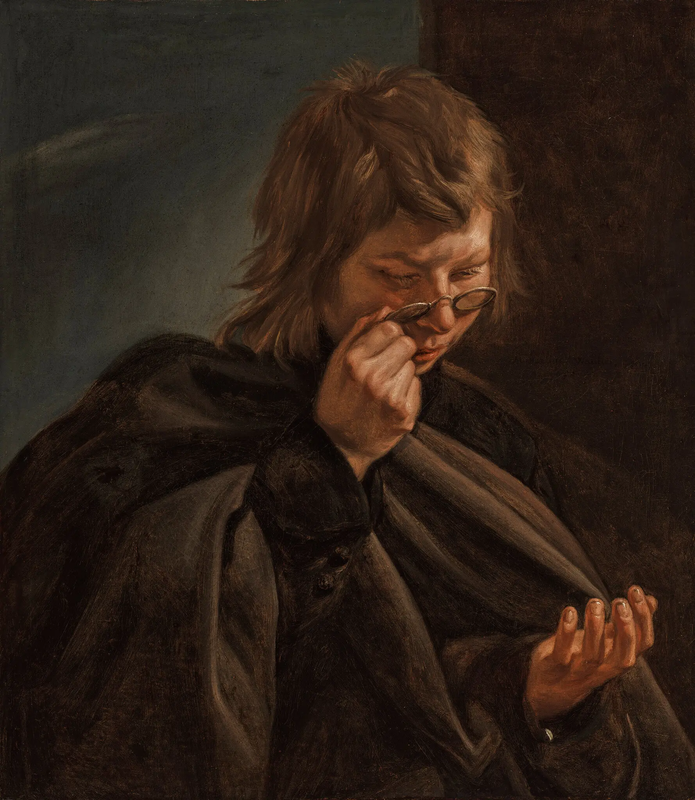'Michaelina Wautier and ‘The Five Senses’ at MFA Boston
Michaelina Wautier, “The Five Senses” as displayed at the Museum of Fine Arts in Boston, Nov. 21, 2022. (Simon Simard/The New York Times)
BOSTON - Centered around her rare series The Five Senses (1650), this is the first gallery space in the Americas dedicated to the art of Michaelina Wautier (1614–1689), a painter from Brussels all but forgotten until the recent rediscovery of her work. The set of five pictures was virtually unknown until it was acquired by Rose-Marie and Eijk van Otterloo and lent to the MFA in 2020. Here, it is joined by Wautier’s remarkable Self-Portrait (1645), on loan from a private collection and on public view in the US for the first time.
Centered around her rare series The Five Senses (1650), this is the first gallery space in the Americas dedicated to the art of Michaelina Wautier (1614–1689), a painter from Brussels all but forgotten until the recent rediscovery of her work. The set of five pictures was virtually unknown until it was acquired by Rose-Marie and Eijk van Otterloo and lent to the MFA in 2020. Here, it is joined by Wautier’s remarkable Self-Portrait (1645), on loan from a private collection and on public view in the US for the first time.
The Five Senses and Self-Portrait, all of which have only been attributed to Wautier in recent years, are among fewer than 40 known works by the artist. Wautier focuses on boys—a different model in each painting—performing everyday activities in her detailed portrayals of Sight, Hearing, Smell, Taste, and Touch. Accompanying prints by her predecessors and contemporaries, including Cornelis Cort (1533–1578) and Johannes Gillisz. van Vliet (about 1610–about 1640), demonstrate Wautier’s originality, showcasing how she defied a convention at the time of depicting the senses as experienced by idealized women. In her Self-Portrait, Wautier presents herself both in a formal aristocratic setting and as a professional artist, facing an easel and holding painting tools. Together, these extraordinary pictures are exemplary of Wautier’s unique style and brushwork. The exhibition also features a print after a now lost portrait by Wautier from MFA Boston that has never been on view.
The installation is accompanied by the first volume of the digital publication series CNA Studies, edited by Professor Jeffrey Muller and with essays by the six organizing students: Yannick Etoundi, Sophie Higgerson, Emily Hirsch, Regina Noto, Mohadeseh Salari Sardari and Dandan Xu.
This is the second in a series of collaborations between the CNA and its academic partners that draws on MFA Boston’s deep collection of Dutch and Flemish art in new and unexpected ways, bringing new perspectives and diverse voices to the forefront while showcasing cross-disciplinary scholarship. The previous installation, “A Modern Art Market,” was on view from November 2021 through October 2022.
The Founders of the Center for Netherlandish Art are Rose-Marie and Eijk van Otterloo and Susan and Matthew Weatherbie.
Michaelina Wautier, Sight, from the series The Five Senses, 1650. Oil on canvas. Rose-Marie and Eijk van Otterloo Collection.
Michaelina Wautier, Taste, from the series The Five Senses, 1650. Oil on canvas. Rose-Marie and Eijk van Otterloo Collection.
Michaelina Wautier, Hearing, from the series The Five Senses, 1650. Oil on canvas. Rose-Marie and Eijk van Otterloo Collection.
Michaelina Wautier, Touch, from the series The Five Senses, 1650. Oil on canvas. Rose-Marie and Eijk van Otterloo Collection.
Michaelina Wautier, Smell, from the series The Five Senses, 1650. Oil on canvas. Rose-Marie and Eijk van Otterloo Collection.
Michaelina Wautier, Self portrait, around 1645, Private collection.
Michaelina Wautier, The Triumph of Bacchus, before 1659, oil on canvas, 270 x 354 cm. Kunsthistorisches Museum, Vienna.

/https%3A%2F%2Fprofilepics.canalblog.com%2Fprofilepics%2F1%2F0%2F100183.jpg)
/https%3A%2F%2Fstorage.canalblog.com%2F03%2F02%2F119589%2F96711876_o.jpg)
/https%3A%2F%2Fstorage.canalblog.com%2F11%2F31%2F119589%2F94773502_o.jpg)
/https%3A%2F%2Fstorage.canalblog.com%2F20%2F83%2F119589%2F94772815_o.jpg)
/https%3A%2F%2Fstorage.canalblog.com%2F26%2F72%2F119589%2F75604929_o.jpg)
/https%3A%2F%2Fstorage.canalblog.com%2F59%2F60%2F119589%2F26458628_o.jpg)










/http%3A%2F%2Fstorage.canalblog.com%2F15%2F40%2F119589%2F129508585_o.jpg)
/http%3A%2F%2Fstorage.canalblog.com%2F33%2F55%2F119589%2F122446557_o.jpg)
/http%3A%2F%2Fstorage.canalblog.com%2F32%2F06%2F119589%2F109791691_o.jpg)
/image%2F1371349%2F20240423%2Fob_b2fe42_telechargement-9.jpg)